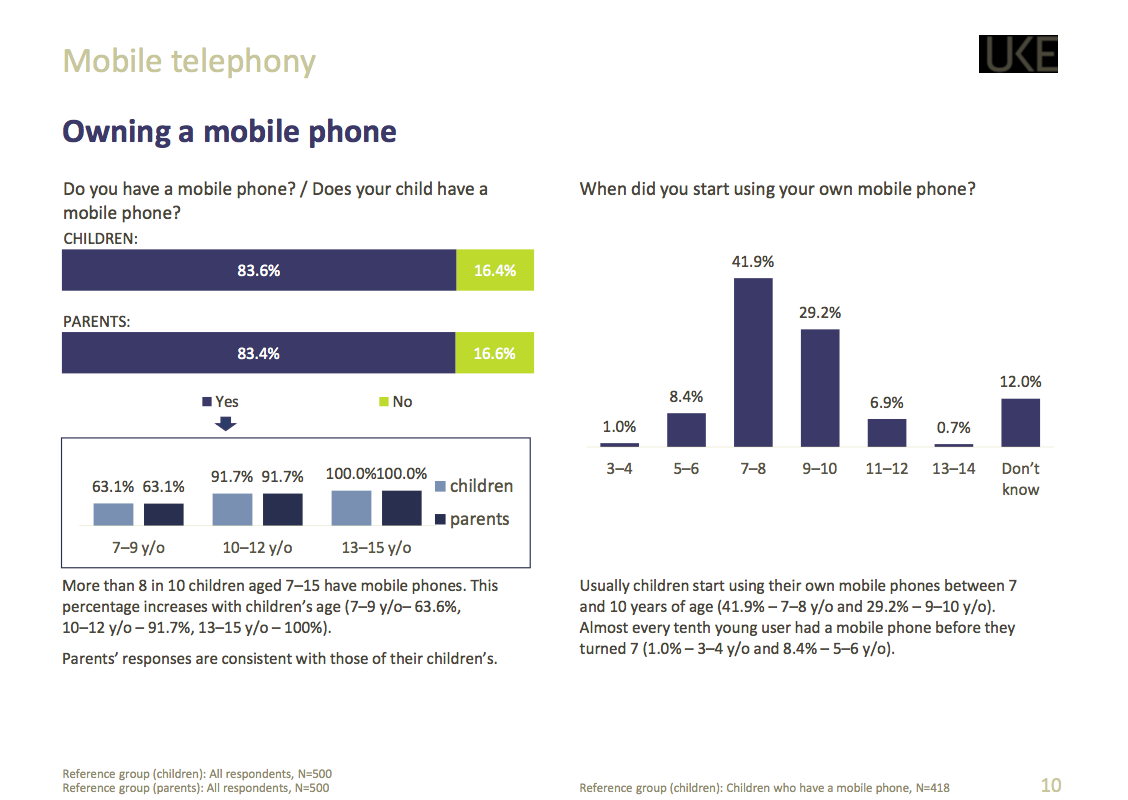Consumer survey of children and parents 2019 in Poland

Office of Electronic Communications present the results of the latest consumer survey conducted in October and November 2019 among children and their parents. It shows how the youngest use telecommunications services.

- At what age do children start using cell phones?
- What services do they use on the phone?
- What social networks enjoy their interest?
- How much do their parents spend on monthly bills and how do they oversee how their children use the internet?
These are some of the questions answered by our latest consumer survey, which was attended by children aged 7-15 and their parents.
Over 80% children from 7 to 15 years old have a mobile phone and this percentage increases with the age of the children: according to declarations, every child in the 13-15 age group has their own telephone. It is in most cases a smartphone (over 90%), and parents pay the bills more often in the form of pre-paid, although buying a subscription for children is almost as popular. Monthly bills usually reach PLN 21-30.

Children most often use the telephone to call family and friends, and to write and receive text messages, and over 70% of them declare that the smartphone is also a device for playing and listening to music, and over 60% browses on it the internet.

90% of children from 7 to 15 years old use the internet. They most often use smartphones, as well as laptops. Much less often children connect to the network using tablets and desktop computers.
The most popular internet services among children are listening to music, watching movies and playing online. The use of educational websites, messengers and social networking sites is also quite common. The least popular services among children are e-mail and information services. The most popular websites and social networking sites among children are YouTube and Facebook. Every fifth young internet user uses Instagram and Snapchat.

Our survey shows that most children care about their privacy online. Over 60% of them do not provide login and password for their profile and do not send their pictures to strangers. Whereas 40 percent of children allow only friends to browse their social media content.
Only half of the surveyed parents take care of children’s safety in using the internet. The most common form of parental control is setting the rules for using the web with their child and discussing their experience. In addition, every third parent uses parental control programs and configures security settings on devices used by the child, and every fourth provides only positive and secure content to the child.



